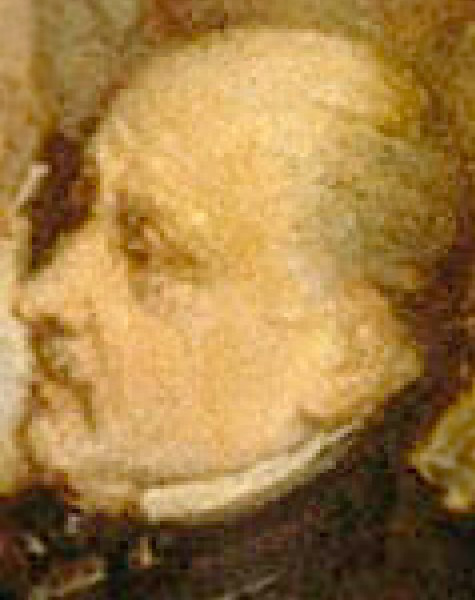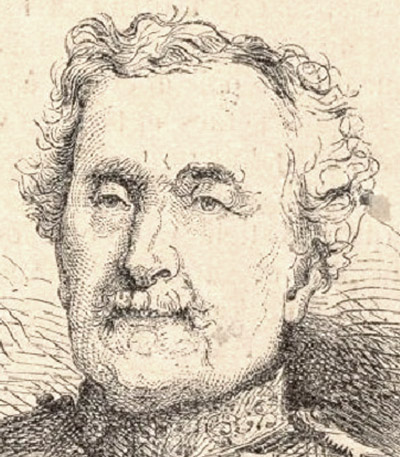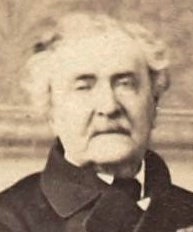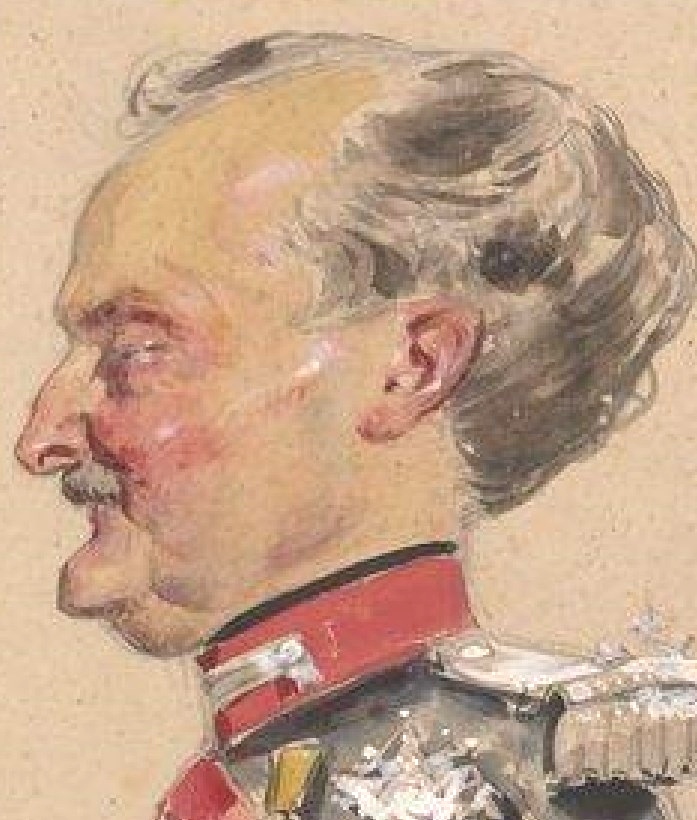Marquis Anatole-Charles-Alexis Lawoestine de Becelair (1786-1870), general
1st image: Soirée; 2nd: litho Lassalle (1860, based on drawing 1840s); 3rd: Mayer & Pierson (1860); 4th: caricature by Eugène Giraud, drawn at Nieuwerkerke's soirée on May 18, 1855.
Anatole de Lawoestine was a descendant of the Belgian family Van Woestyne. After moving to France, Anatole's grandfather replaced 'Van' with the French equivalent ‘de la’. He preferred to maintain Woestine rather than using the French translation (Désèrt). Viel-Castel43 refers to him in his diary as Lovoëstine.
Anatole was the grandson of writer and inventor of modern education principles, Madame de Genlis (1746 -1830), whose former pupil Louis-Philippe became King of France. Lawoestine's parentage was favored by Louis-Philippe, who offered him the command of a cavalry section in 1830.

(caricature Giraud)
Popular for his military achievements, and a wine merchant from 1815 – 1830 —during the Bourbon Restoration— bon vivant Lawoestine (who had an brief affair in his youth with Hortense de Beauharnais, daughter of the empress, later queen consort of Holland) became a regular invitee at the major Parisian salons, where this marquess was noted (and sometimes ridiculed) for his lavishly decorated costumes, well mannered behavior, and appreciation for truffles and champagne.
This even resulted in the naming of a fine-leaved and highly colorful rose after him in 1835.
A newspaper referred to him as a “Morny with a sabre.”
Louis-Napoleon appointed this “last genuine marquis” at the head of his National Gard in 1849. Painter Ary Scheffer41a, positioned next to Lawoestine in the painting, was a captain in his National Gard at the time. In the Garde Nationale of the Seine, Lawoestine was general, and de Nieuwerkerke16 colonel.
Besides his military expertise, knowledge of wine, and how to enjoy the life of an aristocrat, Lawoestine must have also been sufficiently musical, as he was appointed musical leader for a subdivision of the National Guard of the Seine in 1855.
Lawoestine was instrumental in Napoleon's coup of December 1852 and, if not for his military achievements, then for sure for his pleasant aristocratic manners, a logical candidate for de Nieuwerkerke’s vendredi-soirées. For sure they acted together at an Imperial ball at the Tuileries in January 1853, when they arrived, together with Marshall Magnan67, in a recent innovation: fashionable short pants.
In his last will, de Lawoestine made it clear he wanted to be buried without any grandeur, like a regular soldier. He was buried at Père Lachaise.
Note: Lawoestine is not mentioned in an 1855 press article discovered in 2024. In absence of a proper match of other persons mentioned, he remains the most logical candidate. Giraud’s caricature proves that he attended a vendredi-soirée, and his position next to his captain Ary Scheffer must have been a deliberate choice.



